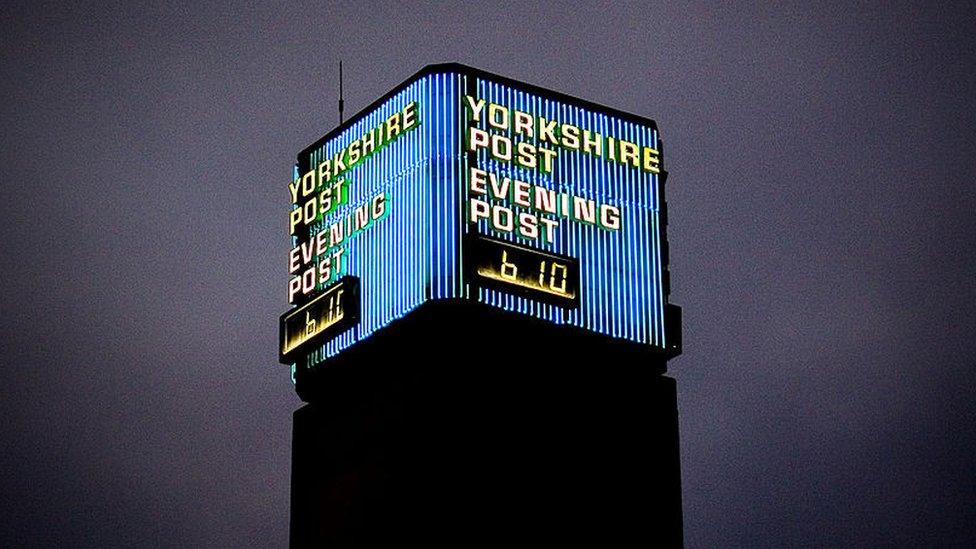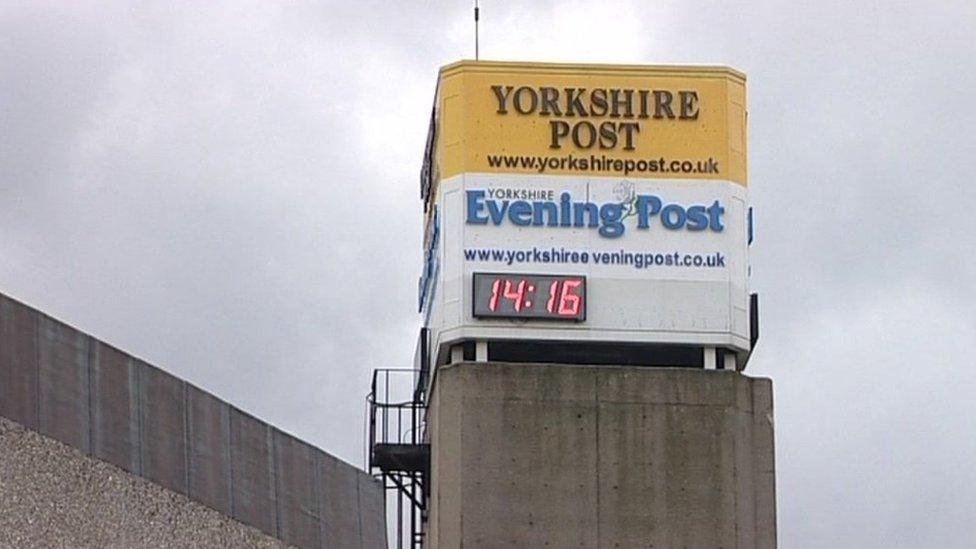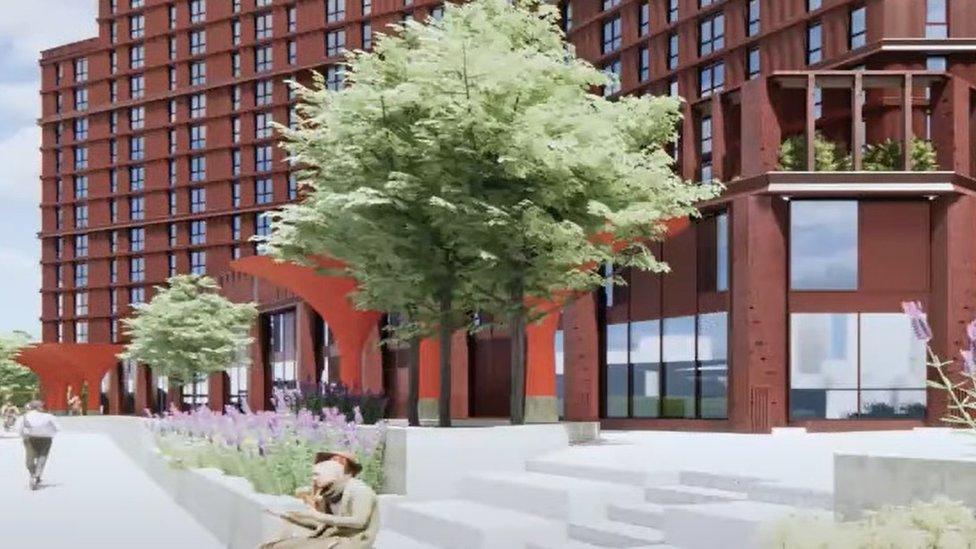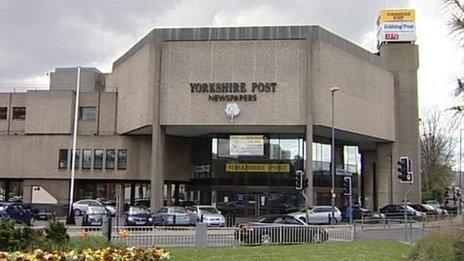Student flats plan for ex-Yorkshire Evening Post site approved
- Published

Pictured above in 2005, the former newspaper offices have been empty since 2014
Plans to convert the former Yorkshire Evening Post (YEP) site into more than 2,000 flats have been approved.
Developers plan to build three separate blocks on the land off Wellington Road in Leeds city centre.
The site was home to the YEP and its sister title, the Yorkshire Post, from 1970 to 2012.
City councillors gave outline planning permission at a meeting on Thursday, further details of the scheme will return to the council at a later date.
According to the Local Democracy Reporting Service, the old tower bearing the mastheads of both newspapers will be taken down, but it is hoped the emblems will be restored and erected somewhere on the site.
The tower was left standing when the offices were demolished.

It is hoped the newspaper's emblems can be preserved and reused on the site
Councillor Asghar Khan said the logos were "iconic" and a "welcome home" beacon for people driving back into the city.
"I know the clock tower has been there for 52 years. I can't tell you how well loved it is."
James Beynon, for developer Urbanite, said they recognised the "iconic nature" of the clock tower but the structure would have to come down for "wind mitigation purposes".
He said until it was taken down they could not assess its condition or if it could be reused.
Mr Beynon said options included reusing parts of the masthead, such as the lettering, or creating a new carbon copy of it.

The new development would feature three blocks and public open space
Urbanite said the buildings would be 42, 32 and 25 storeys in height and would include 2,130 apartments.
Most will be purpose-built student accommodation, though the 25-storey building will feature 348 one, two and three-bed residential apartments.
Some members expressed concerns about wind issues around the site, referencing the wind tunnel effect around Bridgewater Place, built on the other side of the city centre in 2005.
Planning officers, however, insisted they were confident there would be no such issues with this development.

Follow BBC Yorkshire on Facebook, external, Twitter, external and Instagram, external. Send your story ideas to yorkslincs.news@bbc.co.uk, external.
Related topics
- Published16 November 2012

- Published3 August 2012
